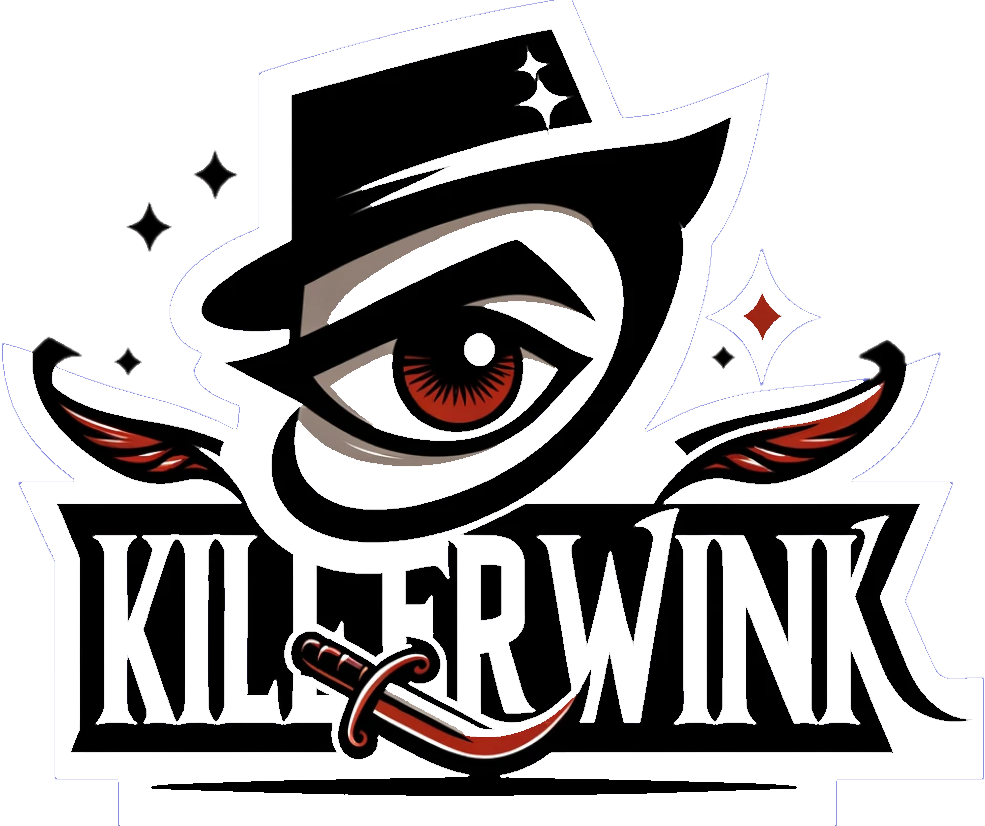The Pink Piano
– Game Rules
In a Few Words...
“The Pink Piano” is the fictional name of an 18th-century Wild West saloon — a dusty hideout for cowboys, outlaws, saloon girls, and poker players.
This setting inspires the fourth Killer Wink of the season, introducing roles such as armed thieves, sheriffs, and vault guards.
More complex but also more strategic than the previous three, this final installment is played in small teams. Without assassinations, it allows all players to stay in the game until the very end, in an atmosphere of challenges, collaboration, and constant suspicion.
I warmly wish you thrilling evenings of mystery and armed robbery.
And now, let the game begin!
Please take the time to carefully read the game rules below. Make sure to explain them clearly to your friends, show them the example images, and don’t overlook anything—every detail is important.
Will Kinker
Requirements
This game is designed for 9 to 16 players, preferably aged 16 and older. However, it also works with younger players, who might find it more challenging to stay discreet and avoid rushing during the game.
The duration of the game varies from 30 minutes to two hours, depending on the players' skill and patience.

Create the Ambiance
If you want to adapt your evening’s theme to the ambiance of American Wild West saloons, ask your friends to come dressed in cowboy hats, boots, leather pants, flowing gowns, and low-cut necklines.
Prepare the Game
Inside the game, you’ll find two special cards with tokens. Use scissors to cut along the dotted lines to create 18 tokens: weapons, sheriff badges, and cards.
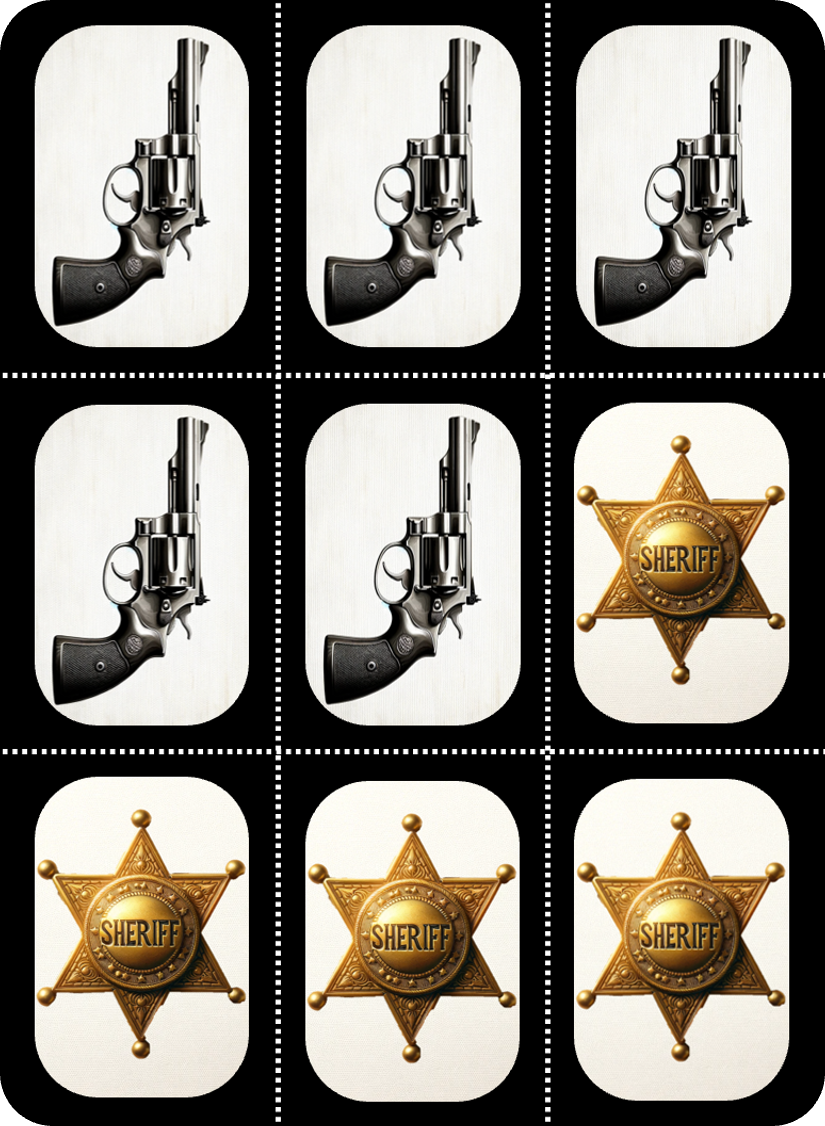
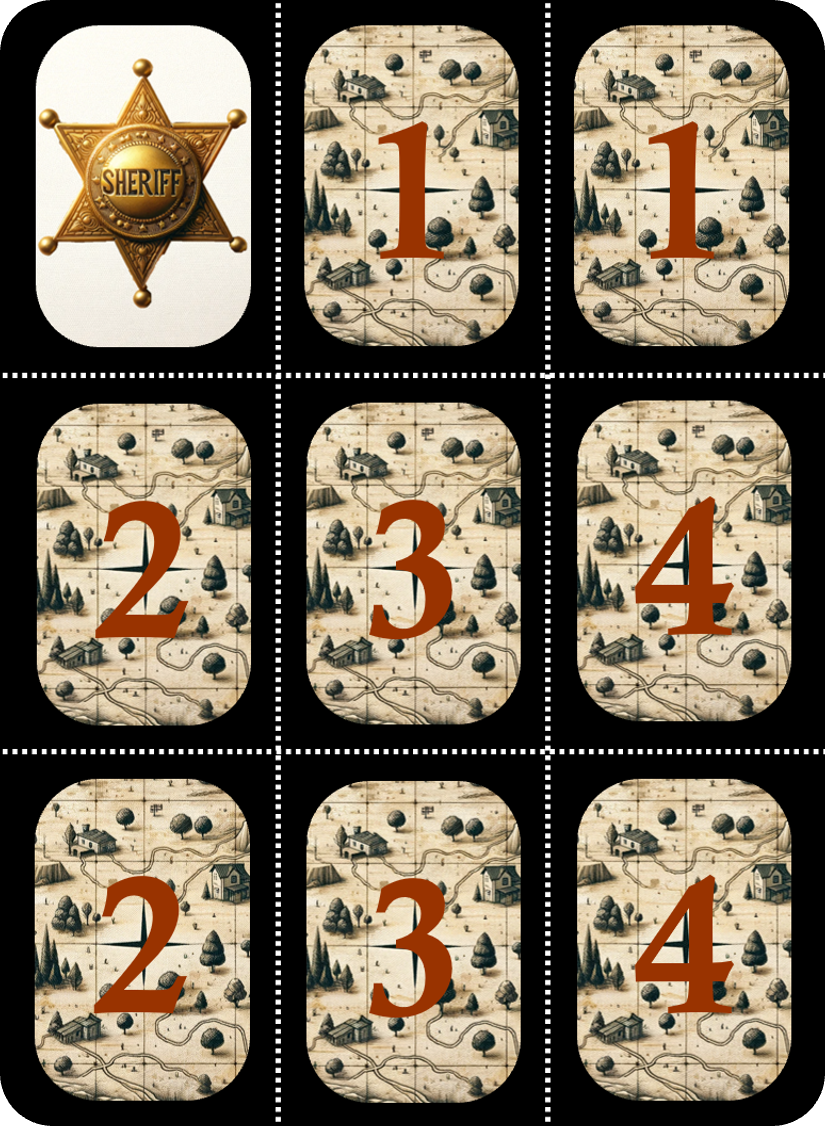
Start by sitting around a table to distribute the cards. Once the roles are assigned, the game will take place throughout your evening—during appetizers, on the porch, in the kitchen, or while dining. The Killer Wink is not played at the table but serves as the backdrop for your evening.
Each player will belong to a clan. There must be 3 to 4 players per clan, with a minimum of 3 clans, making the total number of players between 9 and 16. Each player will receive a token: either a revolver, a sheriff star, or a map fragment. Players may exchange tokens within their clan during the game.
Select the number of cards based on the number of players, ensuring at least three clans with a minimum of three players each. For example, with 10 players, you can have two clans of three players and one clan of four players.
Shuffle the selected cards and deal them to the players. Each player may look at their card but must not show it to anyone else. In the latest version of the game, each card represents a character. Tell the players that they are not allowed to say the name of their character, as experienced players might already know the characters’ clans and could therefore identify the players’ clans.
The Story of The Pink Piano
« It is the 18th century in the American Wild West. Inside the dusty saloon known as "The Pink Piano," the whispers of the wind mix with muffled laughter, while the discordant piano adds a layer of tension to the atmosphere.
The night before, the bank was robbed, and the vault remains hidden somewhere in the Wild West. A precious map, torn into four pieces, holds the key to its location.
Four clans dominate the saloon: The Wolf Claws, The King Snakes, The Eyes of the Sky, and The Desert Fangs, each symbolized by a mountain wolf, a rattlesnake, a vulture, or a coyote.
The outlaws who hid the vault have been captured by the sheriffs. But through the bars of their cells, they entrusted their clans with fragments of the map and ordered them to unite and steal the remaining pieces.
The saloon becomes a battleground for the vault. Showgirls seduce, bartenders serve whiskey, poker players bluff, and outlaws gather clues. Each clan, armed with a map fragment, devises their strategy.
Tension rises in the smoky saloon. Revolvers change hands, map fragments are concealed, and sheriff stars issue threats. Secrets are revealed, and in the shadows of corridors, armed robberies take place to steal the coveted fragments.
The sheriffs watch the moonlight as gunshots echo. Laughter turns to silent challenges, and the curtain falls on "The Pink Piano" when one clan unites the map fragments, claiming victory.
Outside, horses gallop into the wild with the victorious clan, leaving behind "The Pink Piano," forever marked by this Wild West tale... »
Create the Mystery
Prepare a set of tokens for each clan. Each clan's token set should include a map fragment with a unique number. A 4-player clan will have one revolver, one sheriff star, and two identical map fragments, for a total of four tokens. A 3-player clan will have one revolver, one sheriff star, and one map fragment, for a total of three tokens.
In this example, we have 3 clans, 2 with 3 players and 1 with 4 players, making a total of 10 players.

Each player knows their clan, which is determined by their card. This card is kept secret. Players in the same clan are part of the same team and must recognize each other, but their team identity must remain hidden from the other players.
Spread the token set for the first clan in the center of the table. Ask all players, including yourself, to close their eyes and cover them with their hands. Cheating is, of course, not allowed, as it would ruin the game.
Then, ask the players from the first clan, “The Wolf Claws,” to open their eyes. They should identify each other, take one token each from the center of the table, and hide it under their card. After a few moments, ask them to close their eyes again and cover them with their hands.
Spread the second clan’s token set in the center of the table, and repeat the process with the next clan, “The Desert Fangs,” followed by the third clan, and so on, until all clans have received their tokens.
Once all the tokens have been distributed, everyone may open their eyes again. Each player must have one token, and each player must know who their teammates are. Then, take back the cards and put them away in the deck. Each player keeps their token hidden on them — they’ll need to use it during the game.
Important: During this token distribution phase, you must match the token sets to the size of the clans (three or four tokens) corresponding to the clans being called. When selecting cards, if you have prepared clans of three and four players, you must call them in conjunction with the token sets of three and four tokens, respectively.
Player Roles
Robbers are equipped with a revolver. They use it to hold up their victims and steal a fragment of the vault map.
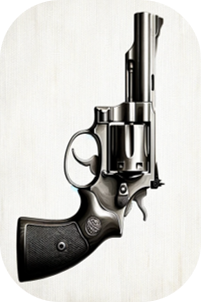
The sheriff star grants you the authority to act as a sheriff. Sheriffs can stop a robbery if they witness it and exchange their star for the robber’s revolver.

The vault card is a fragment of the map that leads to the vault. If you’re carrying a card, you are a vault guardian. Watch out for robbers — they’ll try to steal your piece of the map.
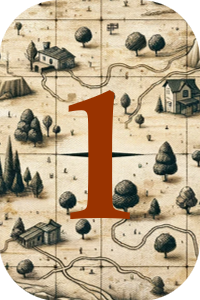
Objective of the Game
Each team’s goal is to steal map fragments from other teams, collecting one fragment of each number to locate the stolen bank vault and set out to find it.
Armed Robbery
To steal a map fragment, the player with the revolver can hold up other players. However, they must be accompanied by their partner, who holds the clan’s map fragment—or once held it, if it has been stolen. During the robbery, the partner is responsible for searching the target’s pockets while the robber executes the hold-up. The robber extends their arm, holding the revolver token, and with a wink to their target, says, “Hands up!” The target must raise their hands in the air.
If the targeted player has one or more map fragment tokens, they must hand all of them over to the robber’s partner. If they have a revolver, a sheriff star, or no tokens at all, the hold-up fails, and everyone keeps their tokens.

Sheriff’s Protection
Players holding the sheriff star are tasked with watching over the saloon to ensure its safety. If a sheriff witnesses a robbery targeting someone outside their clan, they can intervene by shouting, “Drop your weapon, thief!” while displaying their sheriff star. This cancels the robbery in progress.
The robber must then surrender their revolver to the sheriff. In return, the sheriff hands over their sheriff star. The robber is thus demoted to a sheriff, while the sheriff becomes a robber and can attempt to steal a map fragment from another clan.

Vault Keeper
Players holding map fragments can only accompany robbers to search the pockets of other players during hold-ups. However, they must also safeguard their map fragment by trying to stay close to a sheriff from another clan, which requires them to deduce who the sheriffs are.
Lawless Sheriff
Sheriffs cannot protect players within their own clan. This means that vault keepers must rely on their instincts and guesses to find protection by sticking with players they suspect are sheriffs.
Role Exchange
Players within the same clan can discreetly exchange tokens with each other at any time, as long as they are not caught doing so. If a player holds multiple map fragment tokens, they must remain together during the exchange. A player can only hold one role at a time: they can either be armed, a sheriff, or a vault keeper. Role exchanges are an excellent way to confuse other clans and mislead them about your clan’s strategy.
End of the Game
The game ends when a clan successfully gathers a map fragment token for every number, one from each clan. This completes the map to the vault, and the clan wins the game.
Start the Game!
Everything is ready. Don’t forget who you are and what you must do. Play throughout the evening while engaging in other activities—drinks around the table, conversation, cooking, setting the table, going out on the terrace, dining, dancing, stepping outside, or even playing other games. The Killer Wink isn’t played solely around the table; it’s woven into the background of your evening.
Tips
Be quick and discreet. Use subtle glances and signals to communicate with players in your clan. Try to identify the roles and clans of other players, which will help you minimize risk by targeting only players who hold map fragments. Stay alert to role exchanges that could mislead you. Keep chatting with your friends naturally, without revealing your role or your strategy. If you are the sheriff, move around often to catch robbers in the act.
Alternate Versions
Sheriff Hold-Up
If you hold up a sheriff, you may apply the 'Sheriff’s Protection' rule. But beware: this makes the game more challenging for the robbers, since the sheriffs can act as vault guardians and deliberately get held up.
The Complete Vault Map
To make the game last longer, you may decide that all map fragments are required to win, including duplicate numbers. However, this gives an advantage to clans with 4 players.
Death of the Sheriff
In this version, players can be eliminated. If two robbers are in the same clan—meaning you managed to turn your sheriff into a robber—the two robbers from that clan can hold up a sheriff to assassinate them. The targeted sheriff is eliminated, announces it to the other players, and can no longer play. But beware: if another sheriff witnesses this hold-up, they can send both robbers to jail. In that case, the two robbers are eliminated. This version brings more tension and suspicion, as it allows assassinations in the saloon, but it also shifts strategies toward killing opponents before hunting for vault map fragments.
Promote the game
If you had a great time, I’d really appreciate it if you could help support the game by giving it a 5-star rating!
Any questions?
Please send me your questions using the contact form in the site menu. I’ll get back to you as soon as possible. Feel free to share your feedback or suggestions to improve the game through this form. Thank you!
French Version
Buy the Game in English
The pocket version of the game in English is available on The Game Crafter website.
